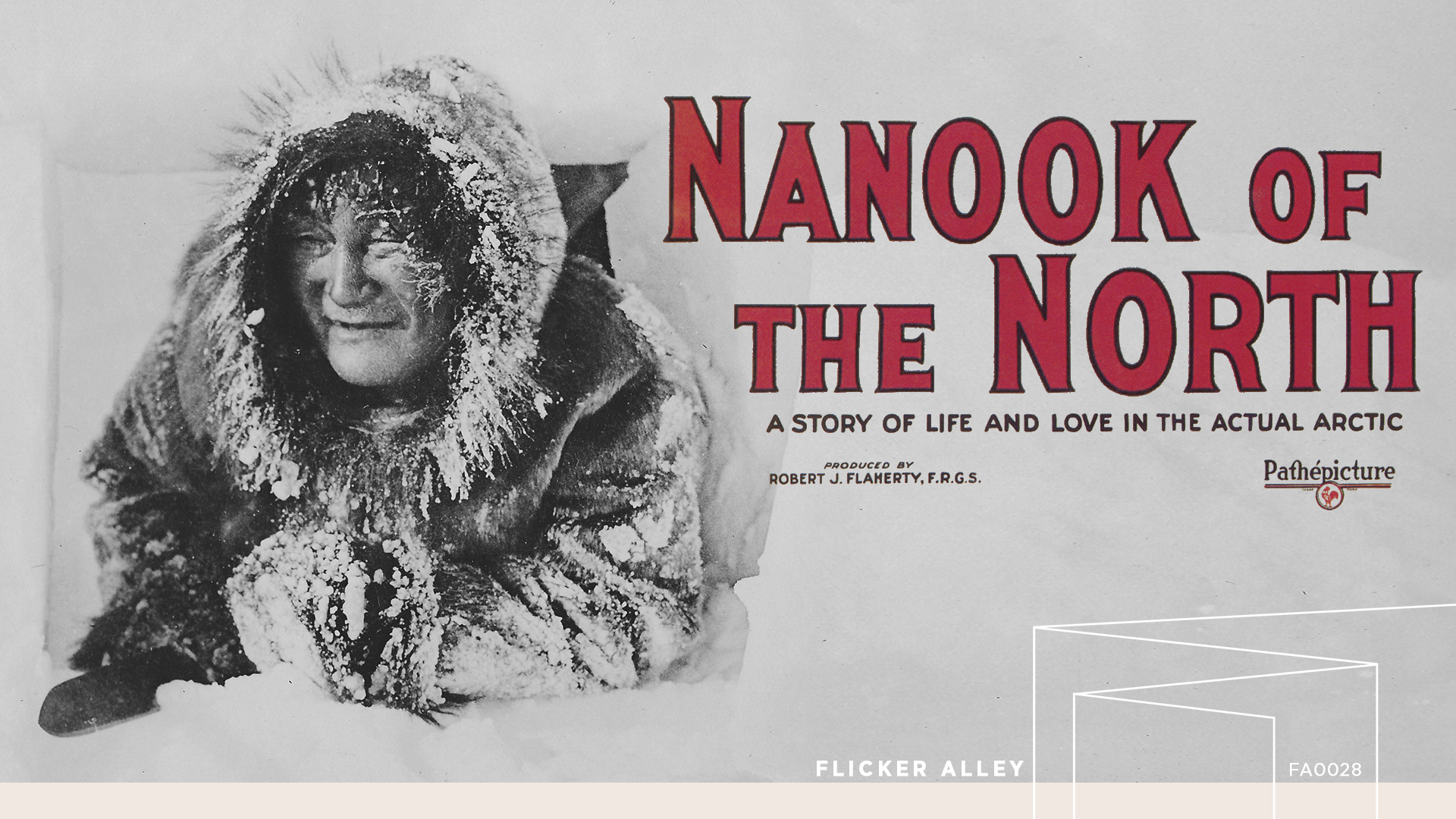
Nanook of the North is a groundbreaking documentary film that was released in 1922. Directed by Robert J. Flaherty, this film chronicles the daily life of an Inuit family living in the Arctic regions of Canada. It is considered one of the most influential documentaries of all time, as it introduced a new style of storytelling and captured the imaginations of audiences worldwide.
In this article, we will explore 35 fascinating facts about the movie Nanook of the North. From the challenges faced during production to the impact it had on the documentary genre, we will delve into the intriguing details that make this film an important piece of cinematic history. So, get ready to discover interesting tidbits about this iconic movie that will deepen your appreciation for the art of documentary filmmaking.
Key Takeaways:
- Nanook of the North, released in 1922, was a groundbreaking documentary that showcased the Inuit way of life, inspiring future filmmakers and challenging traditional documentary filmmaking.
- The film raised ethical questions about authenticity in documentaries, brought attention to the effects of colonization on indigenous communities, and continues to be celebrated for its historical and cultural significance.
Nanook of the North was released in 1922.
The groundbreaking silent documentary film, Nanook of the North, was released to audiences in 1922.
It is considered one of the first feature-length documentaries.
Nanook of the North is widely recognized for its significance as one of the earliest feature-length documentaries in film history.
The film was directed by Robert J. Flaherty.
Under the direction of Robert J. Flaherty, Nanook of the North was brought to life, showcasing his innovative storytelling techniques.
Nanook of the North was shot in northern Quebec, Canada.
The film was shot on location in the Canadian Arctic region of northern Quebec, providing a unique and authentic setting for the story.
The movie explores the Inuit way of life.
Nanook of the North offers a fascinating glimpse into the daily lives, customs, and traditions of the Inuit people who inhabited the region.
The film follows the journey of Nanook and his family.
Through captivating visuals, Nanook of the North follows the main protagonist, Nanook, and his family as they navigate the challenges of survival in the harsh Arctic environment.
It showcases hunting and fishing techniques used by the Inuit people.
The film provides an intimate look at the hunting and fishing methods employed by the Inuit community for sustenance and survival.
Nanook of the North broke new ground in documentary filmmaking.
With its immersive storytelling and realistic portrayal of indigenous culture, the film pushed the boundaries of what was possible in documentary filmmaking at the time.
The movie was well-received by audiences and critics.
Upon its release, Nanook of the North received widespread acclaim for its compelling storytelling and authentic portrayal of the Inuit way of life.
The film sparked a renewed interest in documentary filmmaking.
Nanook of the North’s success paved the way for the future of documentary filmmaking, inspiring countless filmmakers to explore real-life subjects and narratives.
Nanook of the North was originally intended as a travelogue film.
Robert J. Flaherty initially set out to create a travelogue-style film documenting his own experiences in the Arctic, which eventually evolved into the iconic documentary we know today.
Several scenes in the film were staged for dramatic effect.
In order to capture the essence of the Inuit way of life, some scenes in Nanook of the North were carefully planned and staged, while still maintaining the authentic spirit of the film.
Nanook of the North showcases the beauty and harshness of the Arctic landscape.
The film’s stunning cinematography brings to life the breathtaking scenery of the Arctic, juxtaposing its serene beauty with the harsh realities of survival in such an extreme environment.
It was a groundbreaking ethnographic documentary.
Nanook of the North played a crucial role in introducing ethnographic documentary filmmaking, documenting and preserving cultural practices and traditions.
The film has influenced generations of filmmakers.
Nanook of the North’s impact can be seen in the works of numerous filmmakers who have been inspired by its storytelling techniques and exploration of cultural themes.
The movie was initially shot on 16mm film stock.
Using 16mm film stock, Robert J. Flaherty captured the essence of the Inuit way of life, allowing for a more portable and versatile filmmaking process.
The original film negative was destroyed in a fire.
Unfortunately, the original negative of Nanook of the North was destroyed in a fire, underscoring the importance of preserving and safeguarding film heritage.
The film’s score was composed by Timothy Brock.
In 1998, composer Timothy Brock created a new score for Nanook of the North, enhancing the viewing experience and adding a new dimension to the film.
Nanook of the North is considered a seminal work in documentary filmmaking.
The film’s impact on the documentary genre cannot be overstated, solidifying its place as a groundbreaking and influential piece of cinema.
It brought the Inuit culture to a global audience.
Nanook of the North played a crucial role in introducing the world to the rich cultural heritage and way of life of the Inuit people.
The film raises ethical questions about documentary filmmaking.
Nanook of the North ignited debates and discussions surrounding the ethical implications of staging scenes in documentary filmmaking, challenging traditional notions of authenticity.
Nanook of the North was a commercial success at the time.
The film achieved significant commercial success, attracting audiences worldwide who were captivated by its compelling narrative and unique portrayal of the Inuit community.
It inspired subsequent documentaries about indigenous cultures.
Nanook of the North paved the way for future documentaries that explore indigenous cultures and shed light on the challenges they face in a rapidly changing world.
The film brought attention to the effects of colonization on indigenous communities.
Nanook of the North subtly highlights the impact of colonization on the Inuit people and their struggle to preserve their cultural identity.
The movie was instrumental in preserving Inuit traditions and practices.
By capturing the Inuit way of life on film, Nanook of the North contributed to the preservation of cultural practices that might have otherwise been lost to history.
Nanook of the North was re-edited and re-released in later years.
In subsequent years, the film underwent re-editing and was re-released to adapt to evolving cultural sensibilities and to address concerns about authenticity.
The film’s success led to a series of sequels and imitations.
Nanook of the North’s popularity sparked numerous sequels and imitations, attempting to capture the essence of the original film’s success.
It continues to be studied in film schools and universities.
Nanook of the North remains an important part of film education, studied and analyzed for its impact on the documentary genre and its contributions to cultural preservation.
The movie challenged Western stereotypes about indigenous peoples.
Nanook of the North aimed to debunk prevailing stereotypes and portray the Inuit people in a more nuanced and authentic light.
The film’s success led to a renewed interest in ethnographic studies.
Nanook of the North inspired a resurgence of interest in ethnographic studies, as scholars and researchers sought to further explore indigenous cultures around the world.
It pioneered the use of the portable film camera.
Robert J. Flaherty’s use of portable film cameras allowed for greater mobility and flexibility in capturing the Inuit way of life in remote locations.
Nanook of the North remains a testament to the power of visual storytelling.
This landmark documentary film demonstrates the profound impact that visual storytelling can have in conveying universal human experiences and capturing the essence of a culture.
The movie introduced audiences to the concept of “actuality” filmmaking.
Nanook of the North blurs the lines between documentary and storytelling, pioneering the concept of “actuality” filmmaking, which blends documentary elements with fictional storytelling techniques.
It continues to be celebrated for its historical and cultural significance.
Decades after its release, Nanook of the North is still celebrated as a groundbreaking film that offers valuable insights into the Inuit way of life and the art of documentary filmmaking.
Nanook of the North has stood the test of time.
Despite being almost a century old, the film’s impact and relevance endure, earning its place as a timeless classic in the history of cinema.
Conclusion
Overall, Nanook of the North is a groundbreaking and influential documentary that continues to captivate audiences to this day. With its stunning visuals, compelling storytelling, and exploration of the Inuit way of life, it remains an important piece of cinema history. Whether you’re a fan of documentaries or simply interested in learning more about different cultures, Nanook of the North is a must-see film that offers a unique and immersive experience. So, grab some popcorn and immerse yourself in this remarkable cinematic journey into the Arctic.
FAQs
1. Is Nanook of the North a fictional film?
No, Nanook of the North is a documentary film directed by Robert J. Flaherty. While there may have been some reenactments for the purpose of storytelling, the film is primarily a portrayal of real-life Inuit people and their way of life.
2. When was Nanook of the North released?
Nanook of the North was released in 1922. It is considered one of the earliest feature-length documentary films ever made.
3. How did Nanook of the North impact the film industry?
Nanook of the North revolutionized the documentary genre by showcasing the potential of nonfiction storytelling on the big screen. It set a benchmark for observational filmmaking and paved the way for many future documentaries.
4. Are there any controversies surrounding Nanook of the North?
Yes, Nanook of the North has faced scrutiny regarding its authenticity and staged scenes. While it is important to acknowledge the creative liberties Flaherty took in capturing the Inuit way of life, the film remains a significant contribution to cinema history.
5. What is the significance of Nanook of the North today?
Nanook of the North continues to be studied and praised for its cultural significance and influence on the documentary genre. It offers a glimpse into a vanishing way of life and prompts discussions about representation, ethnography, and storytelling in documentaries.
Was this page helpful?
Our commitment to delivering trustworthy and engaging content is at the heart of what we do. Each fact on our site is contributed by real users like you, bringing a wealth of diverse insights and information. To ensure the highest standards of accuracy and reliability, our dedicated editors meticulously review each submission. This process guarantees that the facts we share are not only fascinating but also credible. Trust in our commitment to quality and authenticity as you explore and learn with us.


